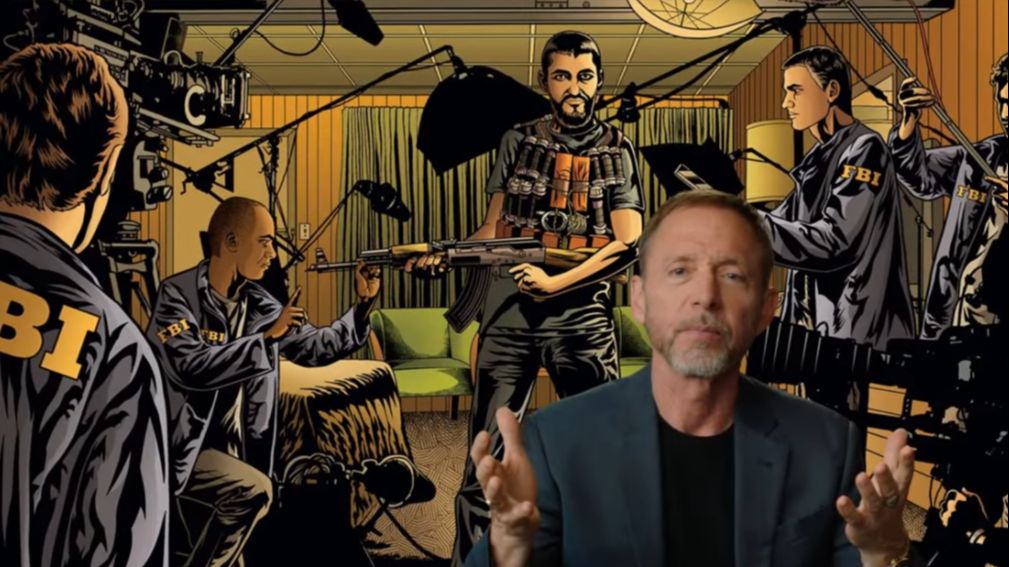Chris Voss, the author of the New York Times bestselling book "Never Split the Difference, Negotiate as if Your Life Depends on It," opposes the mindset of negotiation as a zero-sum game to achieve mutual benefits. With over 20 years of experience as a hostage negotiator for the FBI, he has handled countless cases of kidnappings, bank robberies, and terrorism. Through these real-life experiences, Chris Voss realized that the negotiation skills honed in such high-pressure situations can be applied to many other scenarios in business and personal life.

He believes that the fundamental principles of negotiation between people are essentially similar, regardless of age, gender, or ethnicity. Negotiating with a terrorist or a businessman is based on the same psychological foundation. In fact, we negotiate every day, from small matters like coaxing children to go to bed early to larger issues like persuading friends to choose a different restaurant.
Life, according to Chris Voss, is a continuous series of negotiations. And negotiation is not a battle of "my way" or "your way," but a process of finding a third solution, a solution that can satisfy both parties. He gives the example of two children fighting over a chocolate bar. No matter how it is divided, both remain unsatisfied and believe the other got more. The third solution here is to let one child divide the chocolate bar, and the other gets to choose their piece first. Chris Voss's book shares many valuable lessons about the art of negotiation. In this video, we will focus on 5 important lessons that will help you become a more effective negotiator.
Lesson 1: Understanding Comes First

Every negotiation starts from a common rule that everyone wants to be understood and accepted; listening is the simplest yet most effective way to achieve that. When you listen attentively, you are showing empathy and a genuine desire to understand what the other person is going through. Although it may seem easy, in reality, many people do not know how to listen properly when the other person is speaking; instead of focusing on the speaker's words, they are preoccupied with what they will say next.
And as soon as the other person stops, they immediately present their viewpoint regardless of what the other just said. This makes the other person feel disrespected and think that they were not listened to at all. You have probably experienced this feeling when talking to someone but felt as if the two of you were discussing completely different topics. People often raise their voices in negotiations because they feel unheard. In negotiations, everyone desires three things: first, to be understood; second, to be respected; and finally, to achieve what they want. If you do not listen, do not expect to succeed in negotiations.
Lesson 2: Negotiation is an Exploration, Not a Battle

Those who view negotiation as a battle are often influenced by preconceived notions in their minds. In fact, negotiation is a process of exploration aimed at understanding what the other party truly wants—money, time, respect, recognition, or something else. To achieve this goal, Chris Voss suggests several tactics. The first is to smile, a smile sent to the other party as if you are activating positive emotions in their brain.
Research shows that we are 31% smarter when in a positive mental state and conversely, 31% less intelligent when in a negative mental state. The second tactic is to mirror by repeating the last three words or the most important words that the other person just said. For example, if the other person says, "I have very high expectations and want more money," you can mirror back, "want more money...". The mirroring technique may seem strange at first, but with regular practice, it will yield surprising results. Mirroring encourages the other party to reveal more information; it is much more effective than directly asking, "What do you mean?" When you ask like that, you are giving the other party time to think, and they may conceal their true intentions; conversely, mirroring helps the conversation flow more naturally and prompts the other party to disclose more information after the reflection. Be silent for at least 4 seconds to let this tactic take effect.
Lesson 3: Tactical Empathy

Tactical empathy is the key to understanding and connecting with others, especially in negotiation situations or when consensus is needed. It is not just about displaying surface emotions but also about listening deeply to grasp the underlying worries and emotional barriers. Once you recognize these emotions, labeling them becomes extremely useful. Labeling is the act of succinctly expressing what the other party has just shared to confirm your understanding of their feelings. Effective starting phrases for labeling often include "it seems like" or "it sounds like."
For example, if the other party is passionately talking about their students, you might label it with, "It seems like you really care about your students." Labeling means you are expressing the emotion you perceive in the other party. For instance, if you see that the other party seems anxious, you might say, "I see you seem a bit worried." After labeling, remain silent and wait for a response. This pause allows the other party time to think and confirm their feelings, while also conveying the message that you are genuinely listening to them. Labeling emotions is effective due to two main factors.
First, it helps you verify whether you have correctly understood the other party's feelings. If your assessment is inaccurate, the other party will have the opportunity to adjust and help you understand their thoughts better. Second, labeling shows the other party that you care and are trying to understand them, thereby building trust and connection. This trust is a crucial foundation because when the other party feels positively towards you, the likelihood of reaching an agreement increases significantly, even up to six times. In other words, this tactical empathy helps connect both sides, creating a synergy to solve problems together. When both parties feel understood and are willing to cooperate, finding a solution becomes much easier.
Another application of tactical empathy is diffusing negativity through labeling. This tactic is particularly useful when you anticipate that the other party is carrying negative emotions, such as anger or disappointment. Before the meeting, take time to analyze the situation and predict the negative reactions the other party might express; then, proactively label these negative emotions right from the start of the meeting. For example, if you know the customer is unhappy because your company delivered late, instead of waiting for them to complain, you could start the meeting by saying, "I understand that the late delivery this time may make you feel deceived and lose trust in our commitment. I understand that you might even be considering stopping your collaboration with us, and you have every reason to think that way."
Proactively acknowledging and validating the other party's negative emotions will help calm the situation and steer the conversation in a more positive direction. Instead of letting the other party waste time and energy venting their negative emotions, you can quickly move to the solution discussion phase. This stems from the fact that negative emotions, especially the fear of failure, impact the brain three times more strongly than positive emotions. Therefore, allowing the other party to release these negative emotions is key to achieving better outcomes in negotiations.
Lesson 4: Start from Zero

Another important lesson is to start from zero, meaning do not seek agreement immediately. Contrary to common thinking, a "no" is actually the beginning of an effective negotiation. When someone says "yes," the other party often feels bound and pressured. For example, if you ask, "Can we talk for 5 minutes?" after agreeing, the other party may start worrying about the limited time and the content of the conversation, wanting to finish as soon as possible. A more effective approach is to ask in a negative direction. For example, "Is this not a good time to talk for 5 minutes?"
The other party may respond "no," but at the same time, they will also proactively suggest a more suitable time, such as, "No, it's not suitable, but let me finish xyz and meet you in 15 minutes at my desk." By starting with a question aimed at a "no" answer, the other party will feel they have control, making them more comfortable and focused in the conversation. Moreover, their answer also provides you with useful information without needing to ask further.
Finally, "That's right" is one of the simplest yet most powerful phrases in negotiation; just repeating the other party's words shows that you are listening and understanding. Although simple, this technique is extremely effective in building empathy. When the other party hears you say "that's right," they feel heard and understood, which is also a sign that an agreement is near. However, it is important to distinguish between "that's right" and "you are right." "You are right" often implies a desire to end the conversation or avoid the issue, while "that's right" expresses agreement and active listening.
